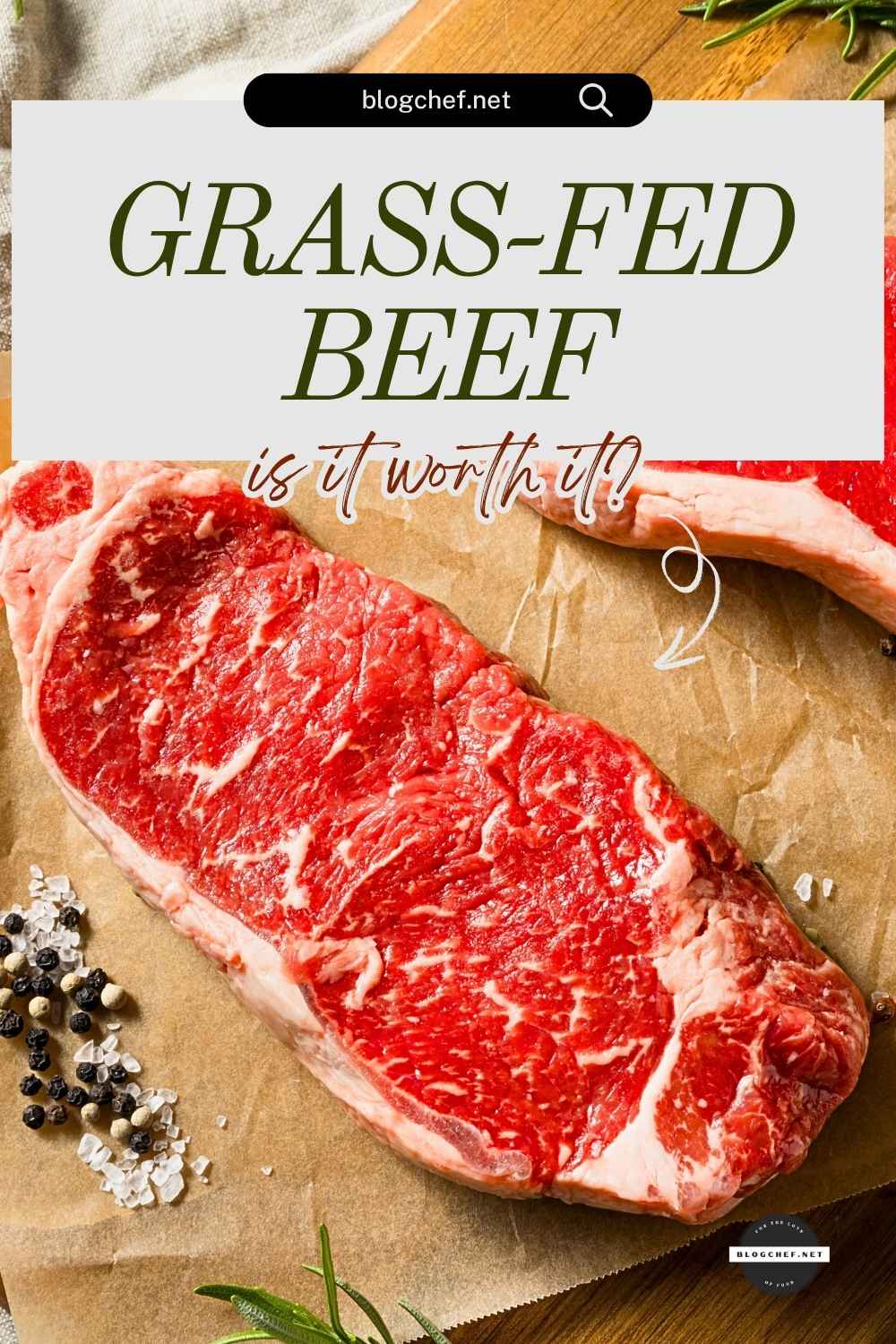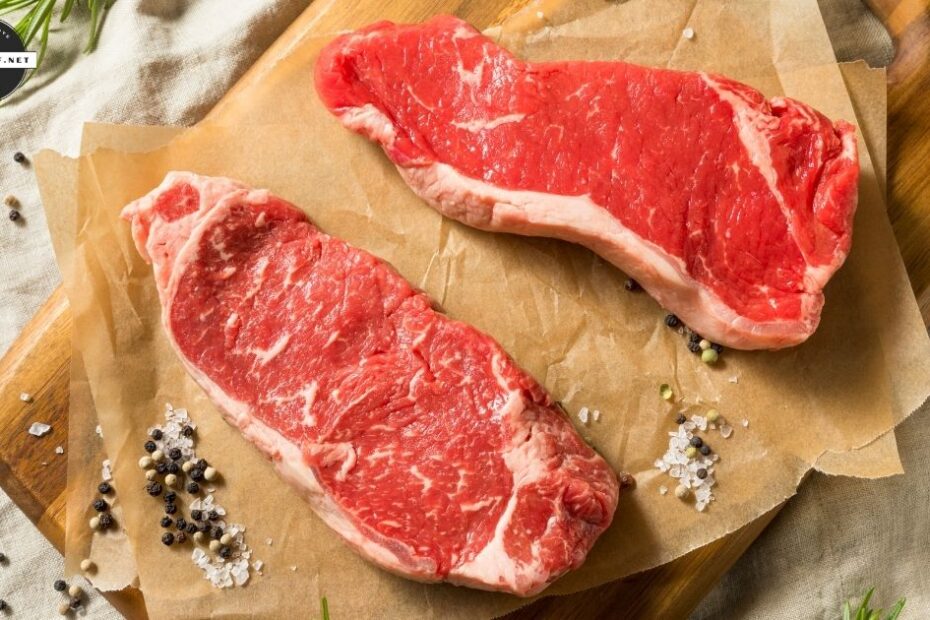Grass-fed beef is everywhere now, from grocery store labels to fast food marketing. It sounds healthier, looks more ethical and definitely costs more. But is the hype worth it, and can you actually taste the difference?

What is grass-fed beef, actually?
Not all beef labeled grass-fed means the same thing. At its most basic, grass-fed cattle eat grass for some or all of their lives instead of being fattened on corn or soy in feedlots. However, here’s where it gets murky: unless the package also says grass finished, the cow may still have been grain fed in the final months to accelerate weight gain.
The USDA no longer actively verifies grass-fed claims, which means companies can label beef as grass-fed without third-party oversight unless it’s certified by organizations like the American Grassfed Association.
Some farms follow strict pasture-raising standards that include rotational grazing, no feedlot confinement and full traceability from birth to slaughter. These operations often work with third-party certifiers such as the American Grassfed Association or Certified Humane to support their claims. On the other end, some producers rely on the grass-fed label for its marketing power while still using conventional practices like feedlot finishing. Without regulation, the same label can mean very different things depending on who’s using it.
The nutrition breakdown: Is it healthier?
Grass-fed beef does have some nutritional differences, but whether they’re meaningful depends on how often you eat beef and what else is on your plate. Compared to grain-fed, grass-fed cuts tend to have slightly more omega-3 fatty acids, higher levels of conjugated linoleic acid and more antioxidants like vitamin E and glutathione. These differences are consistent across various studies, though the gaps aren’t massive unless beef is a major part of your diet.
That said, grass-fed beef is usually leaner, which means fewer calories per ounce, but also less marbling. While that might sound like a win, leaner beef can also be less forgiving to cook and easier to dry out. If your goal is to boost heart-healthy fats or reduce inflammation, you’ll get more mileage from adding oily fish like sockeye salmon or nuts to your meals than swapping every burger for grass fed. Still, if you’re already eating beef, grass fed may be a slightly better nutritional option.
Environmental impact: Is it more sustainable?
Grass-fed beef is often marketed as a more eco-friendly choice, but the reality depends on how the cattle are raised and what standards the farm follows. Some grass-fed operations contribute to better land use and soil health, while others may be less efficient overall.
Where grass-fed systems May shine
Grass-fed operations often rely less on feed crops like corn and soy, which are typically grown using synthetic fertilizers and pesticides. Instead, they use pasture-based models that can help support healthier soil, better water retention and greater plant diversity, especially when rotational grazing is used. These systems also tend to involve lower stocking densities, giving animals more space and potentially reducing stress and disease within the herd.
Where trade-offs come in
Grass-fed cattle generally take longer to reach market weight, which means more land is needed to produce the same amount of beef. The extended finishing time can also lead to higher resource use per animal, including water, labor and time. If sustainability is part of your buying decision, it’s important to focus on how the beef was raised rather than relying on the label alone. Look for producers who are transparent about their grazing methods and land management practices.
Flavor and texture: Can you actually taste the difference?
Ask 10 people if grass-fed beef tastes better, and you’ll get 10 different answers. Some say it’s richer and more complex, others say it’s gamey or tough. The difference comes down to fat content, forage quality and what you’re used to eating.
Here’s what tends to set grass-fed beef apart:
- Leaner cuts: Less intramuscular fat means less marbling, which affects tenderness and mouthfeel.
- Stronger flavor: Much like game meats, some describe it as earthy, mineral-like or even slightly grassy, especially in steaks or roasts.
- Color and texture: Grass-fed beef is often darker red with a firmer texture due to its lower fat and more movement during the animal’s lifespan.
“As someone who cooks and develops recipes for a living, I can absolutely taste the difference in grass-fed beef. It’s leaner, has a deeper, almost earthy flavor, and works beautifully in simple dishes where the meat can really shine.”
—Bella Bucchiotti, xoxoBella
Because it’s leaner, grass-fed beef is less forgiving if overcooked. It’s better suited to lower-heat methods or shorter cook times, especially for steaks. If you’re used to grain-fed beef, the flavor shift might be surprising at first, but many people come to prefer it once they adjust.
For a side-by-side comparison, try ground beef from both sources, which is a good way to notice the difference in the most economical way. This meatloaf recipe is a great starter dish to test the flavor without the pressure of perfect grilling or expensive steak cuts.
Is it worth the cost?
Grass-fed beef often comes with a bit of sticker shock. Depending on the cut and the source, it can cost 30%-50% more than conventional grain-fed beef. That price reflects slower growth, smaller-scale operations and sometimes third-party certifications. However, for most people, the jump in cost raises the question: Is it worth it?
If you’re buying beef regularly, that price difference adds up fast. Some shoppers prioritize it for health or ethical reasons, while others prefer conventional cuts and save the extra money. Availability is another factor. In some areas, grass-fed beef is easy to find at major grocery chains. In others, it’s mostly limited to farmers’ markets or specialty stores with premium pricing.
If you’re curious but not ready to commit, start with more affordable options like grass-fed ground beef or stew meat. You’ll still get a sense of the flavor and texture difference without dropping $25 on a ribeye.
Another way to reduce expenses is to buy in bulk from a local farm, either by the quarter, half or whole animal. It’s a bigger upfront investment, but the per-pound savings are often significant, and you’ll get a freezer full of steaks, roasts and ground beef for much less than grocery store prices. If you’ve got the space and the appetite, it’s one of the most cost-effective ways to buy grass-fed beef.
Bottom line: Should you buy it?
Grass-fed beef isn’t a magic upgrade, but it does come with some specific differences. The nutritional perks are modest, the environmental benefits depend on how it’s raised and the flavor is mostly a matter of personal taste. For some, it’s worth the premium. For others, it may not move the needle enough to justify the cost.
If you’re curious, start small. Try a pound of ground beef, check out a local farm or look for more detailed labeling beyond just grass fed. The label alone won’t tell you everything, but it can be a step toward more informed, value-driven choices at the meat counter.
Ground beef recipes that would show off the flavor difference of grass-fed beef include:
- Cheesy and hearty beef macaroni casserole
- Earthy Chinese meatballs in broth
- Classic beef sliders with chipotle mayo
Gina Matsoukas is the writer, photographer and recipe creator of Running to the Kitchen. Focusing on healthy, seasonal, whole-food recipes, her work has been featured in various online and print publications, including Food Network, Prevention Magazine and Women’s Health. Gina lives in central New York, where she enjoys an active outdoor life.
This article originally appeared on Food Drink Life.
